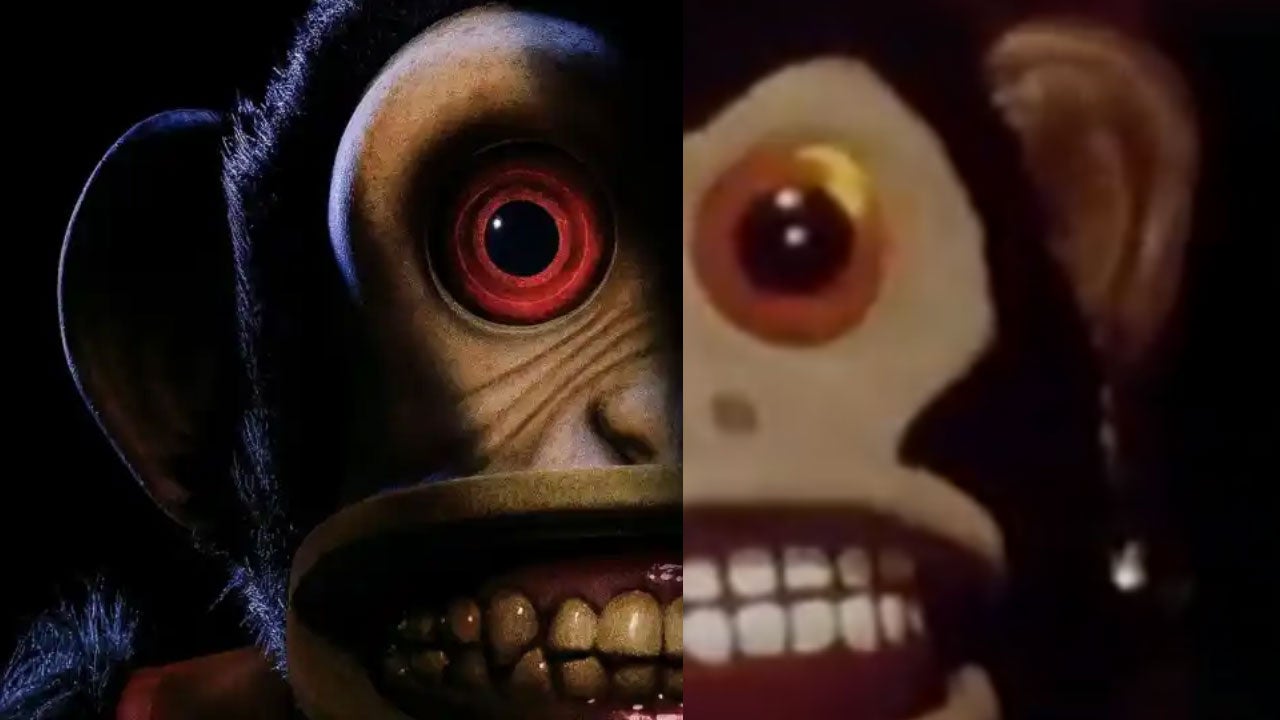
when Horror Yearbook – Stephen King’s Creepiest Toy has captured horror fans’ attention with a brutal mix of comedy and carnage. Based on a 1980 short story, the film tells the tale of a cursed cymbal-clapping monkey that causes deadly accidents every time it plays. This nightmarish concept has been brought to life through the stylized vision of Osgood Perkins, blending grotesque imagery with an absurd tone. Its shocking kills are not just random; they carry eerie weight and bizarre timing. The deaths may be extreme, but they hold symbolic meaning tied to trauma, guilt, and broken family ties. The pacing accelerates quickly and drags viewers into a storm of fatal consequences triggered by what appears to be a harmless toy. Gore and surrealism blend seamlessly in this over-the-top journey into fear. Every cymbal clash tightens the suspense and throws reality off balance. Audiences are unnerved, amused, and unable to look away.
Reviews surrounding Stephen King’s Creepiest Toy reflect the film’s chaotic energy. Some critics celebrated its originality, while others struggled with its disjointed tone. Many applauded the creative kills, with each one executed in ways that feel fresh and unnerving. Fans of classic horror noted how it plays like a love letter to splatter films of the 80s. However, not all responses were glowing. Certain outlets pointed to underdeveloped characters and emotional inconsistencies. Some scenes veered into comedy too sharply, leaving horror fans confused rather than terrified. Despite this, the boldness of its execution keeps it engaging. What has been universally praised is the monkey itself, which stands as a symbol of psychological disturbance. Its design and movement are disturbing, and it becomes a haunting presence from the first scene onward. Even when the plot stumbles, the cursed toy commands attention, pulling audiences back with its eerie charm and mechanical dread.
“Read about: Alien Deals and U.S. Secrets: What Are They Hiding in Area 51?”
Stephen King’s Creepiest Toy sets the stage for a packed year of King-based films. Studios are clearly banking on his continued influence in horror, with multiple projects already lined up for release. After the box office success of this toy-driven nightmare, adaptations like The Long Walk and The Institute have gained fresh momentum. The Monkey may not be the most polished of these entries, but its daring tone and niche appeal have carved out a space for risk-taking in horror. Its moderate success has proven that audiences will show up for experimental storytelling, even if it challenges conventional horror formulas. As more adaptations follow, fans can expect a mix of psychological thrillers, supernatural terror, and genre-blending oddities. This movie’s legacy might not be awards or critical consensus, but instead its role as a catalyst for new and more diverse explorations of King’s darkest stories.
The cursed toy at the center of the film has taken on a life of its own beyond the screen. Collectors and fans flooded Comic-Con booths to grab limited edition replicas of the blood-spattered monkey, sparking online auctions and viral posts. These items quickly sold out, proving the movie’s icon potential. Horror-themed social media accounts are flooded with fan theories, alternate endings, and tribute art. The monkey has entered the realm of pop culture horror icons, alongside Chucky and Annabelle. The buzz does not stop with merchandise. Horror discussion forums have lit up with debate over kill scenes, symbolism, and potential for a sequel. Audience engagement has extended the life of the movie far beyond its theatrical run. While the film’s script might not have won every viewer over, its imagery and mystique continue to build a dedicated fan base. This community-driven momentum gives the film long-term staying power.
Stephen King’s Creepiest Toy is just the beginning of a larger cinematic movement. 2025 is shaping up to be a landmark year for King adaptations, many of which aim to balance nostalgia with fresh perspective. Viewers should anticipate more tales that challenge traditional storytelling and embrace the strange. Films like Welcome to Derry promise deep dives into existing universes, while new titles explore rarely adapted short fiction. Directors are experimenting with tone, style, and character focus. The Monkey has shown that even the oddest stories in King’s library can resonate when handled with passion and vision. This could mark a shift in horror cinema—less reliant on jump scares and more invested in psychological unease and surreal tension. Whether fans want dread, gore, or philosophical terror, this new era of King on screen will offer all that and more. The cursed toy may have struck first, but it definitely will not strike last.